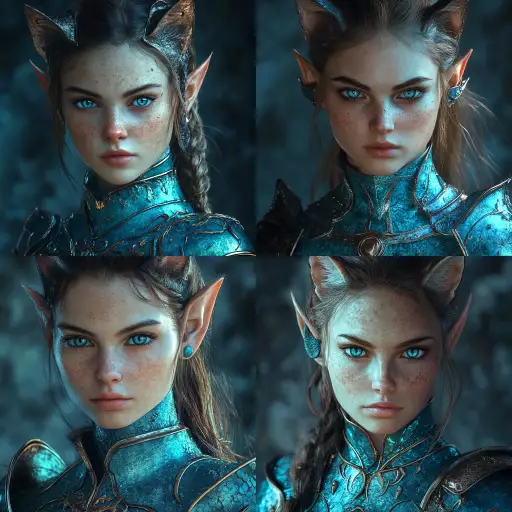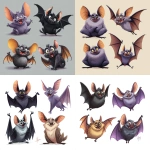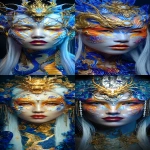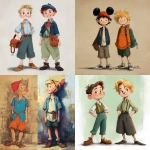Explore the Best AI Image Gallery

AI: The New Creative Collaborator in Graphic Design
The world of graphic design is undergoing a seismic shift, fueled by the rapid advancements in artificial intelligence (AI). AI tools are no longer just futuristic concepts; they are actively reshaping how designers create, collaborate, and bring their visions to life. This blog post delves into the multifaceted impact of AI on graphic design, exploring its potential uses, ethical considerations, and future trends.
Automating the Mundane: Efficiency Unleashed
One of the most immediate impacts of AI in graphic design is its ability to automate repetitive tasks. Imagine algorithms handling tasks like resizing images, generating basic layouts, or even creating color palettes based on pre-defined parameters. This frees up designers to focus on higher-level creative pursuits, such as conceptualizing unique designs, refining aesthetics, and engaging with clients.
AI-Powered Design Assistants: A New Creative Partner
The emergence of AI-powered design assistants represents a paradigm shift in the creative process. These intelligent tools can analyze design briefs, understand user preferences, and even generate multiple design variations based on specific parameters. Designers can leverage these assistants to explore a wider range of possibilities, iterate quickly, and arrive at innovative solutions that might not have been readily apparent.
Unlocking Creativity: AI as a Source of Inspiration
While AI excels at automation and analysis, it also has the potential to spark creativity. AI algorithms can analyze vast datasets of design elements, identify patterns, and generate novel combinations that push the boundaries of conventional aesthetics. This can serve as a valuable source of inspiration for designers, helping them overcome creative blocks and discover fresh perspectives.
The Ethical Landscape: Navigating Bias and Ownership
As AI becomes increasingly integrated into graphic design, it is crucial to address the ethical considerations surrounding its use. One major concern is the potential for bias in AI algorithms. If trained on biased datasets, AI tools could perpetuate existing stereotypes or discriminatory patterns in design outputs. It is essential to ensure that AI models are trained on diverse and representative datasets to mitigate this risk.
Another ethical consideration relates to the ownership of designs generated by AI. When an AI tool creates a design, who owns the copyright? Is it the developer of the AI, the user who provided the input, or the AI itself? These questions are still being debated, and clear guidelines are needed to establish legal and ethical frameworks for AI-generated creative works.
The Future of Design: A Collaborative Landscape
Looking ahead, the future of graphic design is likely to be a collaborative one, where humans and AI work together as partners. Designers will leverage AI tools to enhance their efficiency, explore new creative possibilities, and overcome technical challenges. However, the human element—creativity, empathy, critical thinking, and ethical judgment—will remain essential for shaping meaningful and impactful designs.
AI is poised to revolutionize graphic design, offering both exciting opportunities and complex challenges. By embracing responsible development practices, fostering open dialogue about ethics, and nurturing a collaborative approach between humans and AI, we can harness the transformative power of this technology to create a more innovative and inclusive design future.




](https://images.ai-img.art/thumbnails/150/8d1fe5a7a49cfc96747182431a853357913286d89258383caab2d3b4681afcb5.webp)












](https://images.ai-img.art/thumbnails/150/2fbd98ecfc425cfc1597779121e1c0305437067779e9c471eb64ff9615d5be98.webp)















](https://images.ai-img.art/thumbnails/150/5197af8969d850e2a43e141d41e482ccbceedebceb2a4caf9f098f943f9d1b0f.webp)

](https://images.ai-img.art/thumbnails/150/269414b0e541026702e9e67c67602c96162f37ff460a388b3b36314c8fc936dd.webp)
](https://images.ai-img.art/thumbnails/150/485c8b1c747827bdc9a962f8a1919b3c259b18dd263b260208a1eae19fb85e07.webp)


](https://images.ai-img.art/thumbnails/150/3020b8c2b6d9be07e042357107af1de10deb274a41d2b0f332684ad4b532a702.webp)









